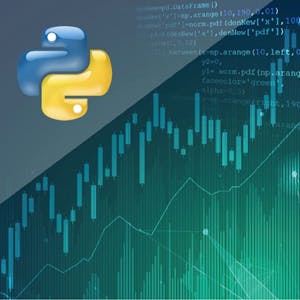Explore the intersection of Python programming and statistical analysis in the financial industry with the "Python and Statistics for Financial Analysis" course. This comprehensive program provides hands-on experience in importing, pre-processing, and visualizing financial data using pandas Dataframe. Delve into statistical concepts such as random variables, frequency, distribution, population and sample, confidence interval, and linear regression, all applied in financial contexts.
Throughout the course, you'll build a trading model using a multiple linear regression model and evaluate its performance using various investment indicators. With Jupyter Notebook environment readily available for practice, you can seamlessly hone your Python coding skills without the need for additional installations.
Certificate Available ✔
Get Started / More Info
The course comprises four modules that cover a wide array of topics, including visualizing and munging stock data, random variables and distribution, sampling and inference, and linear regression models for financial analysis.
This module delves into visualizing and munging stock data, providing essential insights into data analysis packages, importing and manipulating dataframes, and building trading strategies. Additionally, it offers guidance on utilizing Jupyter Notebook for data importing and feature creation.
Discover the essence of random variables and distributions in financial analysis. This module covers the outcomes and models of distribution, offering a comprehensive understanding of frequency and distributions, crucial for financial data analysis and interpretation.
Sampling and inference are crucial components of statistical analysis in financial contexts. This module explores population and sample variation, confidence intervals, and hypothesis testing, offering valuable insights into statistical inference in financial scenarios.
Delve into the application of linear regression models for financial analysis. This module covers association of random variables, simple and multiple linear regression models, and the evaluation of trading strategies built from regression models. It also includes a post-course survey and assessment.
Explore the intricate connections between climate change, economy, and finance in this specialization. Gain insights into the science, economics, and finance of...
Prepare for a career in bookkeeping with Tally Bookkeeper. Gain in-demand accounting and finance skills, learn to use TallyPrime, and understand statutory and taxation...
Create a Financial Statement using Google Sheets provides hands-on guidance to format and populate a financial statement template, empowering learners to present...
Global Financing Solutions is an in-depth exploration of finance, covering various aspects such as syndication, asset finance, project finance, acquisition and buy-outs,...